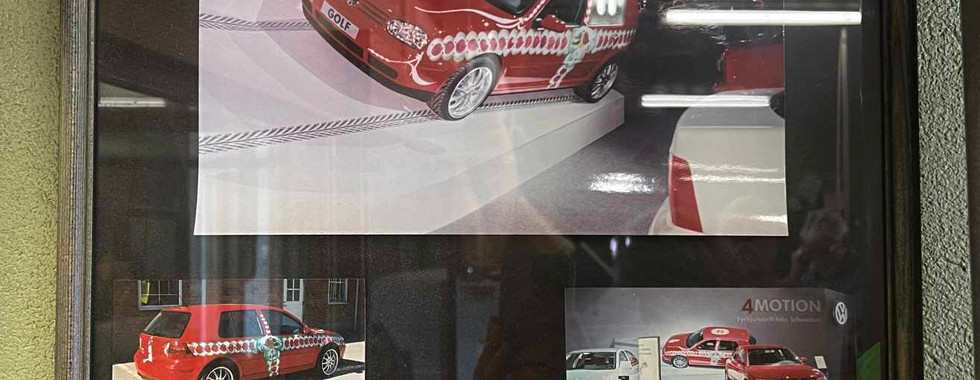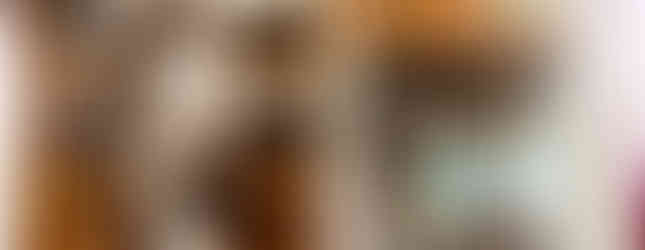(15)Day Fifteen: Dalahorse Heaven - Nusnäs and Mora
- Elflilja
- Sep 16, 2024
- 6 min read
Updated: Oct 7, 2024
In the morning, I jumped out of bed with the excitement of a child on Christmas morning because today we were heading to Nusnäs, the land of Dalahorses! Okay, we had to backtrack a bit on the road, but nothing could deter us. As soon as we arrived, the first thing we encountered was a brilliant warning sign. No, not the classic “beware of children” sign—this one featured silhouettes of three cats with the inscription: "Här bor värdefulla katter utan trafikvett," which means "Here live valuable cats who have no idea about traffic rules." I just had to snap a photo!

Since it was the weekend, I thought only the Grannas A Olsson workshop would be open, so I dove straight into my “personal Disneyland,” where I photographed every inch.
Who knows why I love Dalahorses... but these handcrafted wooden wonders truly enchant me! They are simultaneously cute, authentic, and perfect for decoration. They started as children's toys but are now also considered works of art. Especially here in Dalarna, where they adorn every storefront and almost every window.
Dalahorses are carved from pine wood and then painted by local artisans—each piece is unique. In the past, the designs were simpler, but today, colorful, intricate patterns are almost expected. Flowers, geometric shapes (kurbits)—these traditional Swedish folk art elements are everywhere. The Grannas A Olsson workshop, leads in this art form and continues as a family business, passing down techniques from generation to generation. They carve the horses on-site, and they come in all sizes—from the tiniest to the full “knight” size.
After marveling to my heart's content, we moved on to the shop. Oh, there was everything there! An array of Dalarna and Swedish souvenirs—I began to get lost in the abundance, even though I had seen almost everything. There was even a table where they paint the horses, but no one was working there at the time. Peti quickly grew tired of the Dalahorses, so he went to explore the area. After a while, he came back with the news that there was another workshop—the Nils Olsson one! It was open, even though I thought it would be closed. And here came the “Dalahorse reboot”: I had to see and document everything here as well.
At the Nils Olsson workshop, I even saw a machine (with kurbits patterns :) that could turn a wooden block into a Dalahorse in 3.5 minutes! Of course, this is just the first step because the horse then undergoes sanding and painting—by hand, naturally. The workshop also offered “rödfärg” (red paint)—the famous Swedish red paint used for Swedish cottages. There were also gray and yellow colors, which also give a typical Swedish touch to the cottages.
This workshop is another great pride of Nusnäs. It was founded in the 1920s, just like the Grannas workshop, and the family has carried on the traditions ever since. Grannas and Nils Olsson were brothers, and with these two workshops, the Dalahorse heaven of Nusnäs was born, as if they were secretly safeguarding one of the greatest treasures of Swedish culture. Because these little wooden horses are not just cute decorations, they are living symbols of Swedish folk art. By the end of my visit to the Dalahorse workshop, I felt like a child who had been on a carousel all day—exhausted but happy. Nusnäs truly is the Dalahorse heaven!
We also managed a short excursion to Mora, although we unfortunately missed the Zorn Museum. Anders Zorn, one of Sweden's most famous painters, lived and worked in Mora, Dalarna County. (Of course, where I live, we didn't study him or Scandinavian painters, only Munch’s name came up due to Impressionism.) Next to the museum are Zorn's garden, house, and studio. The house can only be visited with a group tour. Zorn had a beautiful garden, as many do in Sweden. Of course, it’s easier when the weather is not rainy and 40 degrees! :)
In the evening, we walked down to the shores of Lake Siljan from our accommodation in Leksand, where we sat on a free-standing dock. Although the water was too cold for swimming, I dipped my feet in. Meanwhile, we picked red and blue berries from the shore.
This day was truly a genuine Swedish experience—the perfect intersection of Dalahorses and Swedish culture. And when I thought I had seen all the Dalahorses in Nusnäs, I was wrong, because in Mora, a new one seemed to be hiding around every corner!
Anders Zorn (1860-1920, Mora)
One of the greatest figures in Swedish art, Zorn was not just a Swedish painter but a true Renaissance man. Besides his painting talent, he was distinguished by his etchings, sculpture, and ethnographic interest. He uniquely combined Swedish folk traditions with European art movements, perhaps best reflected in his home in Mora. Born in Mora, he was inspired most by the Dalarna landscapes and people. He became known across Europe, with his portraits and landscapes being incredibly popular. Mainly because he masterfully played with light and shadows—moving between realist and Impressionist styles. He studied at the Royal Academy of Fine Arts and traveled throughout Europe during his life. The style of French Impressionists also influenced him. Zorn's home was not just a studio but an elegant fusion of Swedish craftsmanship and fine arts. He was also dedicated to the development of the city of Mora, supporting numerous community projects and helping in the construction of the local hospital. His paintings, especially the portraits, reflect a deep understanding of people, capturing not only their outward appearance but their inner essence. The Zorn Museum is not only a testament to his work but also a gateway to Swedish culture and Zorn's worldview.
Dalahorse (Dalahäst) Interesting Facts and History:
Legend has it that Dalahorses were first carved by Swedish soldiers in the 17th century. During the harsh winters, when there was little work in the fields, soldiers and other men often spent their time carving to keep warm and pass the time. They carved wooden horses for their children, as the horse was a particularly important symbol in Swedish rural life, playing a key role in agriculture and transportation.
Originally, these wooden horses were simple, unadorned figures used as toys for children. Dalahorses are no longer just colorful, hand-painted toys—they are living symbols of Swedish national identity. A piece of history that has survived through the centuries and still plays an important role in Swedish cultural life. The first carved horses were typically painted red because of the famous Falun red paint, which is also the characteristic color of Swedish rural houses. Traditional floral motifs and geometric patterns were used in the painting, reflecting the aesthetic of Swedish culture. This technique (kurbits), closely related to Swedish folk art, began to develop in the 19th century, particularly in Dalarna County. It is at this time that Dalahorse acquired its distinctive colorful, hand-painted patterns. Today, it can be found in almost every Swedish home and is exported worldwide. The craftsmanship of Dalahorses is not merely the meeting of wood and paint—each piece carries respect for Swedish rural life, nature, and tradition. The Nusnäs workshops, such as Grannas A Olsson and Nils Olsson, work with traditional techniques and are pillar members of the Swedish craftsmanship community. In the colors and patterns of these figures lie Sweden’s natural beauty, historical past, and national pride. Dalahorses are thus more than just decoration—they represent a tradition that embodies the essence of the Swedish way of life.
Kurbits Pattern:
The kurbits is a distinctive Swedish folk art motif primarily associated with Dalarna County and is one of the most important elements of Swedish folk decoration. The pattern first appeared in the late 18th and early 19th centuries, mainly on furniture painted by rural craftsmen, in churches, and on other carved decorative objects, such as the famous Dalahorses.
The essence of the kurbits style is the depiction of lush, blooming plant motifs, often excessively decorated and stylized. The pattern typically starts from a large, central flower or plant, from which tendrils, leaves, flowers, and buds emerge in a luxuriant, almost otherworldly manner. The kurbits patterns are rich in colors, often decorated with intense, vibrant shades of red, blue, green, and yellow.
The name “kurbits” is derived from the Latin “cucurbita,” meaning pumpkin or gourd. Early paintings and patterns may have resembled this shape, thus giving the motif its name.
This motif played a role in illustrating the Bible and religious stories. In the early 19th century, kurbits patterns were often used to decorate churches and religious scenes in Dalarna, carrying symbolic meaning. These blooming motifs represented renewal, the cycle of life, and the power of faith. Later, the pattern also spread to everyday objects, such as carved furniture, utilitarian items, and decorative objects.
Today, it is one of the most recognized elements of Swedish folk art, especially in Dalarna County, where many craftsmen and artists apply this style in their work. Dalahorses also feature kurbits motifs, further enriching these traditional items and helping to preserve the beauty of Swedish folk traditions.

































































































































































Comments